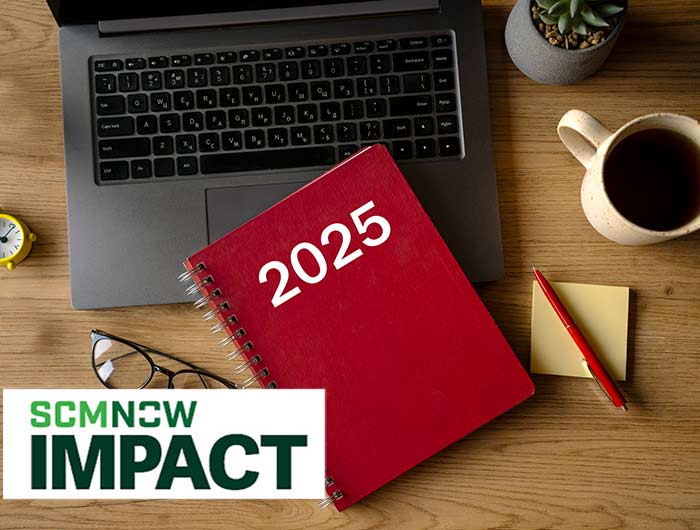The supply chain landscape is evolving rapidly, driven by exciting new tech, global trade dynamics, shifting consumer expectations and more. In 2025, organizations will need to navigate this complex interplay, embrace innovation, build resilience, ensure people are well-trained, and prioritize sustainability.
To help you prepare and maximize the opportunities, read Top 10 Supply Chain Trends 2025, which was carefully curated by ASCM’s Innovation and Strategy Sensing Subcommittee. You’ll find essential insights into the most important issues shaping the future of supply chain, plus key applications and informative industry spotlights. Check out the top three trends here, then be sure to download the full report to explore and learn from them all.
#1. Artificial intelligence (AI) is revolutionizing supply chain operations, from predictive analytics to robotic automation. AI-powered tools can forecast demand with greater accuracy, help perfect inventory levels and streamline logistics. By analyzing vast amounts of data, AI also identifies patterns, trends and anomalies to help supply chain organizations make more informed decisions.
For instance, some companies are using AI-powered predictive analytics to forecast demand fluctuations and adjust production schedules and inventory levels. This reduces the risk of stockouts and overstocks, improving overall supply chain efficiency. Furthermore, AI-driven automation, such as robotic process automation and machine learning, automate repetitive tasks, reduce human error and boost productivity.
#2. Global trade dynamics and geopolitical policies continue to shape the supply chain landscape. Geopolitical tensions, trade wars and economic fluctuations disrupt supply chains, increase costs and create uncertainty. To mitigate these risks, businesses must adopt a proactive approach to supply chain management.
Diversifying supply sources, building strong relationships with suppliers and developing robust contingency plans are crucial strategies to enhance supply chain resilience. Additionally, businesses can use advanced technologies, such as blockchain, to improve transparency and traceability in global supply chains.
#3. Big data and advanced analytics offer critical insights into supply chain performance. The vast amount of data generated by sensors, manufacturing equipment, enterprise software systems and more presents a significant opportunity for businesses to gain a competitive advantage. By analyzing vast amounts of data, businesses are improving operations, making more informed decisions, and driving innovation and efficiency.
For example, by analyzing historical data on sales, demand and supply chain performance, organizations identify critical patterns and trends. This information can be used to make more accurate forecasts, refine inventory levels and improve production planning. Additionally, data analytics help find bottlenecks and inefficiencies in the supply chain, enabling businesses to take corrective action.
Reveal all 10 trends
Getting ahead of these trends enables supply chain professionals to proactively shape a successful, sustainable future. Ready to unlock the full potential of your network? Download Top 10 Supply Chain Trends 2025 to discover valuable applications and implementable strategies for each of the latest topics shaping the supply chain industry. With a deep understanding of what’s to come, you’ll be equipped to position your organization for ongoing resilience and success.
Watch our recent livestream Q&A on the top 10 trends for supply chain for 2025.



